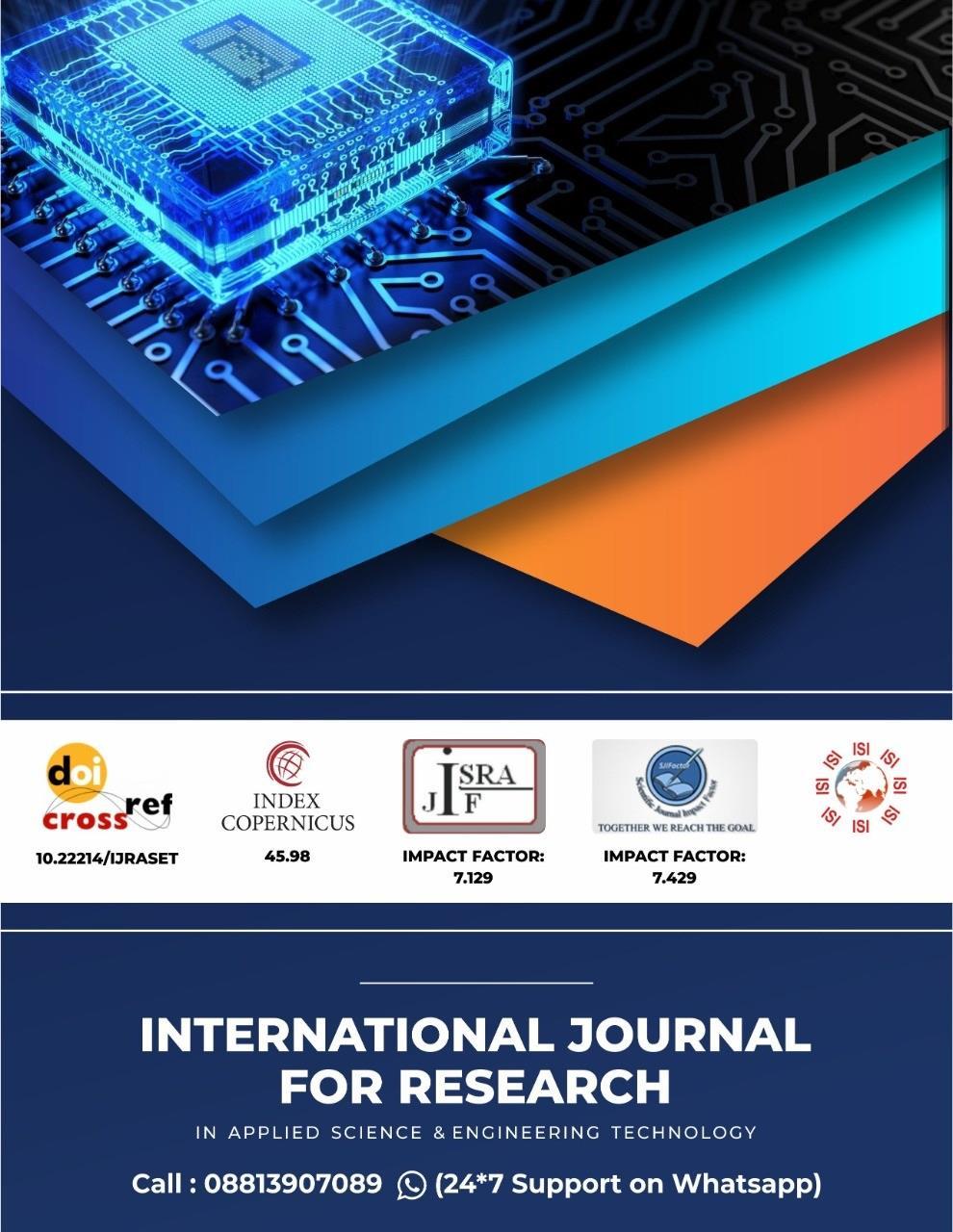https://doi.org/10.22214/ijraset.2023.49732

ISSN: 2321-9653; IC Value: 45.98; SJ Impact Factor: 7.538
Volume 11 Issue III Mar 2023- Available at www.ijraset.com

https://doi.org/10.22214/ijraset.2023.49732

ISSN: 2321-9653; IC Value: 45.98; SJ Impact Factor: 7.538
Volume 11 Issue III Mar 2023- Available at www.ijraset.com
S. Saridha1 , T.
Jothika2 1Associate Professor, 2PG Student, PG and Research Department of Mathematics, Cauvery College for Women (Autonomous) Tiruchirappalli-620018, India
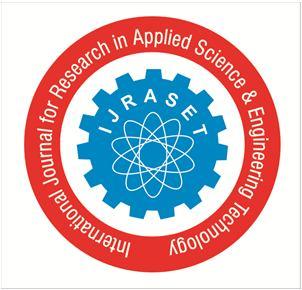
Abstract: The core of this paper is to construct Derivation Trees of Plus Weighted Context Free Grammars and the bonding between Plus weighted Context Free grammar and Plus weighted Context Free Dendrosystem is established.
Keywords: Trees and Pseudoterms, Plus Weighted Context Free Dendrolanguage Generating System (P-CFDS), Sets of Derivation Trees of Plus Weighted Context Free Grammars.
Weighted context free grammars and weighted finite automata were initially introduced in significant articles by Marcel-Paul Schutzenberger (1961) and Noam Chomsky (1963), respectively. Weighted automata and their accompanying algorithm are developed by contemporary spoken-dialog or handheld speech recognition systems to express their concepts and promote successful combination and search [1,7].
If there is connection between context-free grammars and grammars of natural languages, it is undoubtedly, as Chomsky proposes, through some stronger concept like that of transformational grammar. In this framework, it is not the context-free language itself that is of interest, but, rather, the set of derivation trees, i.e., the structural descriptions of markers. From the viewpoint of the syntax directed description of fuzzy meanings, sets of trees rather than the sets of strings are of prime importance.
A plus weighted automata [8,9,10,11] is an automata that deals with plus weights up to infinity. Many algebraic structures of plus weighted automata has been discussed in [8,9,10]. Thus we are motivated to study systems to manipulate plus weighted dendrolanguage generating system which is the generalization of fuzzy Context Free Dendrolanguage generating System. Plus weighted Dendrolanguage generating System can also be extended to max weighted automata cited as [2,3,4,5,6]. This work can be further motivated to work in Labeling of trees in graph theory [13,14,15,16,17,18] with plus weights which will give more focus on the paths it prefer.

This paper comprises of 6 sections including this section phase 2 offers some fundamental ideas which are needed for the succeeding section. Section 3 use the records about trees and Pseudoterms. Section 4 offers with Plus Weighted Dendrolanguage Generating System. Section 5 gives the Normal Form of P-CFDS
In this section we review some basic notations and definitions about grammar and its types. Definition 2.1
A phrase-structure grammar or grammar is a four tuple G = <V , V , S, P> Where, V is a set of non-terminal symbols, V is a set of terminal symbols called alphabets, S is a special element of V and is called the starting symbol, P is the production. Relation on (V V ) , the set of strings of elements of terminal and non-terminal.
Types of grammars
Type 0 or unrestricted grammar: A grammar in which there are no restrictions on its productions.
Type 1 or context sensitive grammar:Grammar that contains only productions of the form and V


ISSN: 2321-9653; IC Value: 45.98; SJ Impact Factor: 7.538
Volume 11 Issue III Mar 2023- Available at www.ijraset.com
.Type 3 or
is of the form a or aB where

A finite closed
A pair (N: T) of finite alphabets N and t (N: T) is a function from a finite tree



Trees on (N: T) can be represented graphically by constructing a rooted tree (where the successors of each node are ordered), , representing the values of the hand tree has the domain



uition for considering tree
Thus, we define
satisfying the following conditions:
By way of
is atomic (i.e) then the corresponding tree b has domain and

2. If , then b has domain domain and for q=iq’ in the domain of b,




ISSN: 2321-9653; IC Value: 45.98; SJ Impact Factor: 7.538

Volume 11 Issue III Mar 2023- Available at www.ijraset.com
A plus weighted set T of trees is defined by a membership function the set of all plus set of trees is denoted by
In this section, we define the set of derivation trees of plus weighted context free grammars as plus sets of trees and we characterize them by P-CFDS’s.
A. Definition 4.1
A Plus Weighted Context Free Dendrolanguage Generating System (P-CFDS) is 6-tuple S= (N0, N, T, W, P, 0) such that the following conditions hold:
1) N 0 is a finite set of symbols whose elements are called non terminal node symbols.

2) N is a finite set of symbols whose elements are called node symbols.
3) T is a finite set of symbols whose elements are called leaf symbols.
4) W weighting space (ie) W=([0,),+, )









5) P is a finite set of plus rewriting rules of the form.
B. Definition 4.2
) , (
A plus weighted context-free grammars (P-CFG) is a 5-tuple G = (N, T, W, P, S), where,


1) N is a set of nonterminal symbols.
2) T is a set of terminal symbols.
3) P is a set of plus production rules.
4) S is a initial nonterminal symbol.


5) W is a weighted space. (ie) W = ( ) “+” usual addition ”.” usual multiplication for a derivation, under a plus context free grammar G, we define a derivation tree with a degree of membership as follows:
1. For
2. Suppose that ( is given for some I and that is realized by with (It is assume that the symbol B replaced by corresponds to a leaf node v in ). Then ( is given by,

Where is the leaf node set of and by
Let be a plus set of trees on (N; T) defined by the above procedure for all possible derivations of a plus weighted context free grammar G . Then is called a plus set of plus weighted derivation trees of G.
C. Theorem 4.3

For any given P-CFG, G = (N, T, P , S), there exists an P-CFDS,


ISSN: 2321-9653; IC Value: 45.98; SJ Impact Factor: 7.538
Volume 11 Issue III Mar 2023- Available at www.ijraset.com
corresponds to the application of the rule for the derivation of P-CFG, its derivation tree is generated by the P-CFDS as follows;
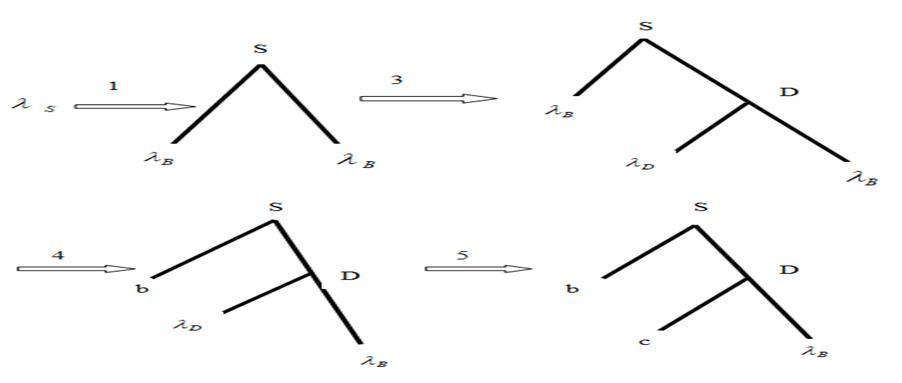







ISSN: 2321-9653; IC Value: 45.98; SJ Impact Factor: 7.538
Volume 11 Issue III Mar 2023- Available at www.ijraset.com
We now consider the converse of theorem we prove that for an be a homomorphism defined by h(b) = b for b in T and h(F) = n for


D.
proof:
set N = N , T , S and determine P as follows


E.
For any P
Proof:
F. Theorem 4.7


Every P
proof: N
1.If
is in P, then , where
1. If is in P, then the rule. is in
It follows that if (t; c) is a fuzzy derivation tree of this grammar, , a projection of (t; c) is a plus tree generated by the P-CFDS, S, where is defined, in terms Pseudoterms as follows:





Consider the P-CFDS given by the following rules:
ISSN: 2321-9653; IC Value: 45.98; SJ Impact Factor: 7.538


Volume 11 Issue III Mar 2023- Available at www.ijraset.com
For this P-CFDS, define a P-CFG by the following rule:
For example, the plus derivation, has a derivation tree.


and its degree of membership is 4. The projection of this tree defined in the proof of theorem which is contained in the P-CFDL generated by the given P-CFDS.
In this paper Sets of Derivation Trees of Plus Weighted Context Free Grammars is introduced and Every P-CFDL is a projection of the plus set of derivation trees of an P-CFG is proved with suitable illustrations. Further this topic can be extended to verify the algebraic properties of plus weighted derivation trees.
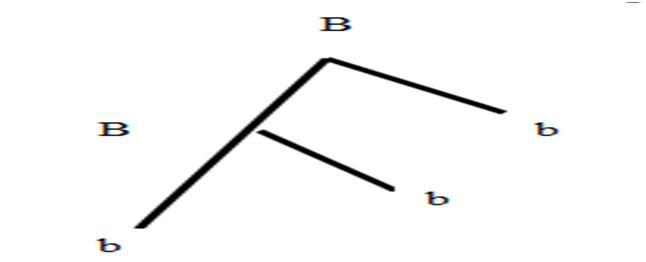
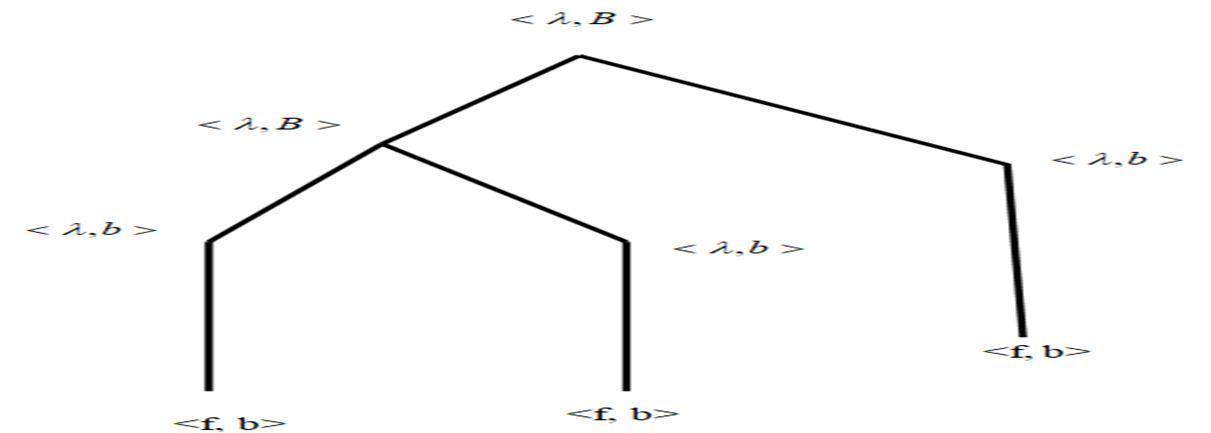








ISSN: 2321-9653; IC Value: 45.98; SJ Impact Factor: 7.538
Volume 11 Issue III Mar 2023- Available at www.ijraset.com
[1] Allauzen. C., Benson, E., Chelba, C.,Riley, M., and Schalkwyk, J. (2012) Voice query refinement. In “Interspeech”.
[2] Chitra, K., K., “A Study on Recognizability Of Max Weighted Finite State Automaton”, Journal Of Computer and Mathematical Sciences, Volume 8,Issue 11, December 2017, Pg. No. 658-673, Impact Factor: 4.655,ISSN NO:0976-5727.
[3] Chitra, K., “Algerbraic Properties Of Max Weighted Finite State Mealy Machines”, International Journal Of Information And Computing Science, Volume 6, Issue 1, January 2019. Pg. No.69-83, Impact Factor: 5.2, ISSN No:0972-1347.
[4] Chitra, K., “Homomorphism On Max Weighted Finite State Mealy Machine” ,Journal Of Applied Science And Computations, Volume 5, IssueXII,December2018. Pg. No: 96-103, Impact Factor: 5.8, ISSN No: 1076-5131.
[5] Chitra, K., “Minimal Machines On Max Weighted Finite State Mealy Machines”, International Journal Of Information And Computing Science, Volume 6, Isssue 5, May 2019. Pg No. 4-23, Impact Factor: 5.2, ISSN No: 0972-1347.
[6] Chitra, K., “Some Products On Max Weighted Finite State Automaton” ,International Journal Of Applied Engineering Research, Volume 13,Number22, 2018. Pg. No. 15806-15803, Impact Factor: 2.28, ISSN No: 0973-4562.
[7] Mohri, M., Pereira, F. C. N., and Riley ,M. (2008) Speech recognition with weighted finite state transducers, in “Handbook on speech proc. and speech commm”, Springer.

[8] Saridha, S. and Rajaretnam, T., “Algebraic Properties of Plus Weighted Finite State Machine”, International Journal Of Applied Engineering Research,eISSN:0973-9769, p-ISSN:0973-4652,Vol.13, Number 21, 2018, 14974-14982.
[9] Saridha, S. and Rajaretnam, T., “A Study On Plus Weighted Multiset Transformation Semi groups”, International Journal Of Information And Computing Science, e-ISSN:0972-1347,Vol.6, Issue I, January 2019, 84-98.
[10] Saridha, S. and Rajaretnam, T., “On Regular Properties Of Plus Weighted Multiset Finite State Automaton”, Journal Of Applied Science And Computations,eISSN:1076-5131, Vol.5, Issue XII, December 2018, 87-95.
[11] Saridha, S., Rajaretnam, T., Plus weighted finite state automaton, in Journal Of Computer And Mathematical Sciences(JCMS 2017), Vol.8, Issue 11, ISSN 0976-5727, pp674-690.
[12] Saridha, S. and Rajaretnam, T., “Some properties of plus weighted multiset grammars”, International Journal Of Information And Computing Science, eISSN:0972-1347, Vol.6, Issue 5, May2019, 24-37.
[13] Shalini. P, Paul Dhayabaran. D, “An Absolute Differences of Cubic and Square Difference Labeling”, International Journal of Advanced Scientific and Technical Research, May-June 2015, Issue-5, Volume-3, Pages 1-8.
[14] Shalini. P, Paul Dhayabaran. D, “A Study on Root Mean Square Labelings in Graphs”, International Journal of Engineering Science and Innovative Technology, May 2015, Volume-4, Issue-3, Pages 305-309.
[15] Shalini. P, S.A.Meena, “Lehmer-4Mean Labeling of Graphs”, Volume 10,Issue XII, International Journal for Research in Applied Science and Engineering Technology (IJRASET), Page No: 1348-1351, ISSN: 2321-9653.
[16] Shalini. P, S. Tamizharasi, “Power-3Heronian Mean Labeling Graphs”, Volume 10, Issue XII, International Journal for Research in Applied Science and Engineering Technology (IJRASET), Page No: 1605-1608, ISSN: 2321-9653.
[17] Saridha, S, Haridha Banu, S, “A New Direction Towards Plus Weighted Grammar”, Volume 11, Issue II, International Journal for Research in Applied Science and Engineering Technology (IJRASET), Page No:845-850, ISSN: 2321-9653.
[18] Shalini. P, Paul Dhayabaran. D, Minimization of Multiplicative Graphs, International Journal of Current Research, Volume 7, Issue-08, Pages 19511-19518, August 2015.
